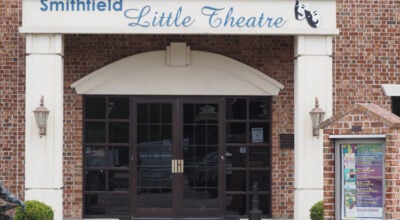State defers to localities on masking for schools
Published 5:04 pm Tuesday, July 27, 2021
Starting this week, local school divisions will be responsible for their own masking and social distancing policies to deal with COVID-19.
The public health order issued by state health commissioner Dr. Norman Oliver compelling schools to require masks and other social distancing policies expired July 25.
The interim guidance for COVID-19 prevention in Virginia pre-K through 12th-grade schools stresses the importance of in-person learning and said the state would support school divisions as they make decisions on having students and staff wear masks and taking other precautions.
School divisions are required to offer in-person learning for five days per week for the upcoming school year, and provide at least three feet of physical distancing “to the greatest extent possible,” but the state guidance states that shouldn’t be a barrier to offer in-person learning.
The state guidance recommends divisions make their decisions based on local COVID-19 data and guidance from the U.S. Centers for Disease Control and Prevention.
“This guidance takes into consideration recommendations from the Centers for Disease Control and the American Academy of Pediatrics,” said Gov. Ralph Northam in a statement, “and will provide necessary flexibility for school divisions while ensuring a safe, healthy, and world-class learning environment for Virginia’s students.”
Isle of Wight County Schools is also offering a virtual learning option for students this year through Virtual Virginia, which includes primarily general core classes, not honors courses, electives or career and technical education.
The state departments of health and education “strongly recommends” the following measures for the upcoming school year:
- Elementary school students, teachers and staff should be required to wear masks indoors regardless of vaccination status until vaccines are available for children under 12 years old and there has been enough time for them to be fully vaccinated.
- Middle and high school students, teachers and staff who are not fully vaccinated should wear masks indoors. Though school divisions regularly confirm school-required immunization records of their students, they should consult with their attorneys in determining if and how to confirm student and staff COVID-19 vaccinations.
- School divisions may want to consider universal masking for specific reasons, as outlined in certain circumstances by the CDC, and should plan to adjust local mask policies as local public health conditions change throughout the year.
- The CDC’s federal order requiring masks to be worn on public transportation is still in effect, and applies to public school buses in Virginia.
Isle of Wight County’s 7-day positivity rate for COVID-19 tests has been rising over the past month to 5.6% as of July 23. The number of new cases per 100,000 people in the last seven days is 54.1.
Isle of Wight County Schools held in-school COVID-19 vaccine clinics for students ages 12 and up at five of its schools June 16-17.
There, over 200 of the division’s 5,000-plus students received their second dose of the Pfizer-BioNTech vaccine. The first-dose clinic had taken place May 26 and 27 after the U.S. Food and Drug Administration expanded its emergency use authorization of the vaccine for the age group earlier that month.
According to July 23 Virginia Department of Health data, only 35% of Isle of Wight’s age 12 to 15 population had received at least one dose of a COVID-19 vaccine, and only 28% were fully vaccinated. Among Isle of Wight’s 16- and 17-year-olds, 48% have received at least one dose and 42% are fully vaccinated.
“The science is clear that vaccinations and masks help keep our communities safe from COVID-19,” said Dr. Daniel Carey, secretary of health and human resources in a statement. “Due to the dedication, expertise, and close partnership of the Virginia Department of Health and the Virginia Department of Education, the Commonwealth’s children and the individuals that help them learn will be protected by proven strategies, without a one-size-fits-all approach.”
Oliver said everyone needs to do whatever possible to keep everyone safe in school, and the guidance is designed to provide localities with flexibility given COVID-19 metrics where they are.
State Secretary of Education Atif Qarni said the guidance should provide support for school divisions, and Superintendent for Public Instruction Dr. James Lane said the state’s priority is to provide safe, in-person instruction.
“With this latest guidance and ample federal pandemic relief funds available to school divisions,” Lane said, “our local school leaders are equipped to implement appropriate mitigation strategies and ensure student and staff safety within the schools in their communities.”
Northam directed $492 million in CARES Act money in 2020 to go to public schools and pre-K through 12 state-level education initiatives. The state received about $939 million in ESSER II funds under the Coronavirus Response and Relief Supplemental Appropriations Act of 2021, 90% of which was given to school divisions in January, with the other 10% held in reserve for state-level initiatives. American Rescue Plan Act Elementary and Secondary Emergency Relief money directly provides $1.9 million to school divisions, with the state setting aside an additional $211 million.
Northam also announced earlier this year $62.7 million in education recovery grants for school divisions for targeted initiatives to deal with impacts from the coronavirus pandemic.





